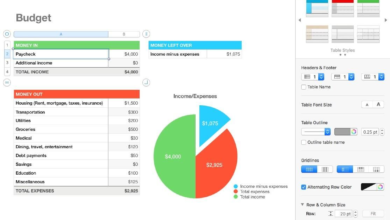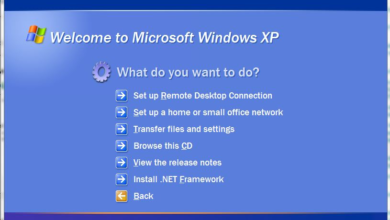How AR and VR Are Transforming Medical Training
Discover how AR and VR enables risk-free surgical practice, immersive anatomy study, and enhanced clinical skills development.

Augmented Reality (AR) and Virtual Reality (VR) are revolutionizing medical education by creating immersive, interactive training environments that were once unimaginable. These cutting-edge technologies allow medical students and professionals to practice complex procedures, refine diagnostic skills, and enhance surgical precision all without risking patient safety. From virtual anatomy labs to lifelike emergency simulations, AR and VR are breaking down traditional barriers in medical training, offering scalable solutions that improve learning outcomes while reducing costs.
The integration of AR and VR in medical training represents a paradigm shift in how healthcare professionals acquire and hone their skills. Unlike conventional methods that rely on cadavers, textbooks, or high-risk live practice, these digital tools provide realistic, repeatable, and adaptive learning experiences. As medical institutions worldwide adopt these innovations, they are not only elevating the quality of education but also democratizing access to advanced training, ensuring that future doctors, surgeons, and nurses are better prepared than ever before.
The Rise of Immersive Learning in Medical Education
Medical training has traditionally relied on textbooks, cadavers, and supervised real-life practice, which come with significant limitations. Cadavers are expensive and scarce, while real-life practice involves inherent risks to patients. AR and VR address these challenges by offering realistic, repeatable, and scalable training solutions. Medical students can now step into virtual operating rooms, interact with 3D anatomical models, and simulate emergency scenarios with unprecedented accuracy. Virtual Reality, in particular, has gained traction in surgical training. High-fidelity VR simulations allow trainees to practice intricate procedures, such as laparoscopic surgeries, in a controlled environment.
Enhancing Diagnostic Skills Through Virtual Simulations
Diagnostic training is another area where AR and VR are making a profound impact. Medical students often struggle to develop strong diagnostic skills due to the lack of exposure to diverse clinical cases. VR-based diagnostic simulations present trainees with a wide range of virtual patients, each exhibiting different symptoms and medical histories. By engaging in these scenarios, students can refine their clinical reasoning and decision-making abilities without the pressure of real-life consequences. For instance, VR platforms like Osso VR and Surgical Theater provide modules where learners can diagnose conditions ranging from common ailments to rare diseases.
Reducing Risks and Improving Patient Safety
One of the most significant advantages of AR and VR in medical training is the ability to practice high-risk procedures without endangering patients. Invasive surgeries, emergency interventions, and complex deliveries can be rehearsed repeatedly in a virtual setting, allowing trainees to build confidence and competence before performing them in real life. This risk-free practice minimizes medical errors, a leading cause of preventable patient harm. For example, VR simulations for emergency medicine enable trainees to manage critical scenarios such as cardiac arrests, trauma cases, and neonatal resuscitations. These simulations replicate the stress and urgency of real emergencies, helping learners develop the ability to think quickly and act decisively.
Democratizing Medical Education Worldwide
Access to quality medical training has long been a challenge in underserved regions due to limited resources and infrastructure. AR and VR are breaking down these barriers by offering scalable and cost-effective educational solutions. With a VR headset and an internet connection, students in remote areas can access world-class training programs, virtual lectures, and collaborative learning experiences previously available only in top-tier institutions. Organizations like the World Health Organization (WHO) and various NGOs are leveraging VR to train healthcare workers in low-resource settings. For instance, VR-based programs for midwifery training have been implemented in rural Africa, significantly improving maternal and neonatal care.
The Future of AR and VR in Medical Training
AI-Enhanced Personalized Learning
Future AR and VR systems will integrate advanced artificial intelligence to create adaptive training modules that adjust to each learner’s pace and skill level. AI tutors will provide real-time feedback, identify knowledge gaps, and customize scenarios to challenge students appropriately. Machine learning algorithms will analyze performance data to optimize training regimens, potentially reducing the time needed to achieve surgical proficiency.
Haptic Feedback Evolution
Next-generation haptic gloves and full-body suits will provide increasingly sophisticated tactile sensations, allowing trainees to feel tissue resistance, organ textures, and even subtle physiological responses. Researchers are developing “multi-modal” feedback systems that combine touch with temperature and pressure simulations, crucial for procedures like laparoscopic surgery or delicate neurosurgical interventions.
Mixed Reality Operating Rooms
Hospitals will implement hybrid AR and VR systems where surgeons overlay 3D patient scans directly onto the surgical field through smart glasses. These systems will integrate live vital signs, AI-powered risk alerts, and remote expert guidance. Future ORs may feature “digital twins” of patients – virtual replicas that surgeons can manipulate pre-operatively to plan and rehearse complex cases.
Global Collaborative Training Networks
Cloud-based VR platforms will enable real-time multinational training sessions where medical teams from different countries can practice together in shared virtual environments. This will be particularly transformative for rare case training and disaster response preparation, allowing geographically dispersed specialists to collectively solve complex medical scenarios.
Neuroscience-Based Skill Optimization
Emerging neurotechnology will monitor trainees’ brain activity during VR simulations to assess stress responses, decision-making patterns, and procedural memory formation. This biometric data will help design training programs that optimize neural pathways for surgical skills, potentially using neurofeedback to accelerate the development of muscle memory and clinical intuition.
Extended Reality (XR) Certification Programs
Medical boards will likely adopt standardized XR-based testing protocols where competency is assessed through increasingly complex virtual scenarios rather than traditional exams. These may include multi-day simulated hospital shifts that test both technical skills and soft skills like patient communication and team leadership under pressure.
Ethical and Psychological Preparedness Training
Future platforms will incorporate emotionally intelligent virtual patients that challenge trainees with ethical dilemmas, cultural sensitivities, and end-of-life scenarios. Advanced emotion recognition AI will coach learners on bedside manner, while VR exposure therapy could help medical professionals overcome fears or traumas associated with high-stakes procedures.
Lifelong Learning and Skill Maintenance
AR and VR will enable continuous professional development through micro-training modules accessible via mobile devices. Surgeons might review a rare procedure via AR glasses minutes before an operation, or entire departments could participate in monthly VR crisis drills to maintain emergency readiness without disrupting clinical workflows.
Integration with Other Emerging Technologies
The convergence of AR/VR with 5G, IoT medical devices, and blockchain credentialing will create comprehensive training ecosystems. Imagine practicing with smart surgical robots in VR before operating the real systems, or using AR to visualize a patient’s real-time genomic data during simulated treatments.
Read More: Meet Your New Doctor: The Rise of Virtual Health Assistants
Conclusion
AR and VR have undeniably revolutionized medical training, offering unprecedented opportunities for immersive, risk-free learning. By simulating complex surgical procedures, enhancing diagnostic accuracy, and providing interactive anatomical exploration, these technologies are bridging the gap between theoretical knowledge and hands-on practice. As healthcare continues to evolve, AR and VR stand as powerful tools that not only improve competency but also increase accessibility to high-quality medical education worldwide.
The future of AR and VR in medical training is exceptionally promising, with advancements in AI, haptic feedback, and mixed reality further enriching the learning experience. These innovations are setting new standards in medical education, ensuring that the next generation of healthcare professionals is better equipped to deliver precise, efficient, and patient-centered care. As adoption grows, AR and VR will undoubtedly become indispensable in shaping a safer, more advanced medical landscape.
FAQs
How does VR improve surgical training?
VR provides realistic surgical simulations, allowing trainees to practice procedures repeatedly in a risk-free environment, improving precision and reducing errors.
Can AR assist in real-time medical procedures?
Yes, AR overlays critical anatomical information onto a surgeon’s field of view, enhancing accuracy during surgeries and other medical interventions.
Is VR-based medical training accessible in remote areas?
Absolutely. VR requires only a headset and internet connection, making high-quality medical education available even in underserved regions.
What are the cost benefits of using AR and VR in medical training?
AR and VR reduce the need for expensive cadavers, physical labs, and supervised practice, lowering overall training costs while improving scalability.
How do virtual patients enhance diagnostic training?
Virtual patients present diverse clinical scenarios, helping trainees develop diagnostic skills through interactive, AI-driven case simulations without real-world risks.











